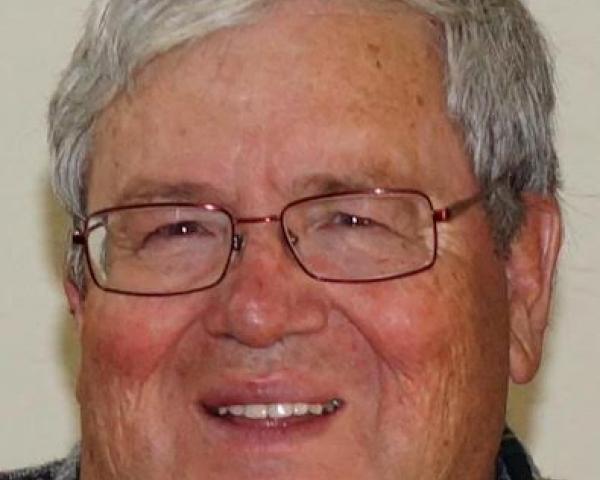Is it time to re-visit the methodology used by agents to determine replacement costs and re-construction costs? How confident are you that the real property replacement values that you develop are sufficient to either replace or rebuild? If a natural catastrophe hit your community, would you have the same confidence in your replacement or rebuild figures? As the increasing frequency and severity of natural disasters occur, one of the first questions in their aftermath concerns underinsurance.
In the aftermath of the Marshall Wildfire in Boulder County, Colo., the Denver press has continually explored these questions from the insured survivor’s perspective, but there has been little discussion from the insurance industry perspective. The purpose of this blog is to start a discussion on the continuing perceptions of underinsurance, especially after natural disasters, to determine if there are changes needed to better estimate the replacement costs on both personal and commercial policies that agents sell to our customers.
Insurance to value (ITV) is a basic concept that many insurance personnel learn at the outset of their careers. Although counseled that we are not appraisers, adjusters, agents and underwriters were provided with training and valuation tools, aka costimators, that seemed to work very well over the years. Conversations with many front-line agent/brokers assisting with their customer’s valuations find that these tools do not change in their basic structure and do not regularly leave customers underinsured. In retrospect, were they just lucky because they did not face many total losses, or did their continual efforts to monitor and adjust the replacement cost values (RCV) help achieve those excellent valuation outcomes.
Bottom line: This methodology and training has worked quite well over the past 50 years to assist customers with valuing RCVs. Many agents have occasionally seen competitor agents/companies use similar tools to undervalue required limits, which permitted them to underbid higher, more correct valuations. While this behavior still exists, it does not occur as frequently as it once did, and, in the new insurance marketplace used to occasional natural catastrophes, it presents another opportunity for the agent to advocate protection over lower prices.
Why does this subject matter to the author? When he was embarking into semi-retirement, he was asked to serve as a volunteer insurance consultant to the Waldo Canyon wildfire recovery team, Colorado Springs Together (CST), because he was not directly contracted with any of the insurers that faced 347 total losses and some additional damaged properties. Starting that volunteer effort, he was initially concerned about the potential for underinsurance based on other insurance catastrophes, rumblings in the local press and chatter in social media. This recovery process was a huge learning experience in many different aspects of how insurance policies deliver in a major natural disaster, but, happily, the issue of underinsurance did not prevent one of the most complete major wildfire recoveries experienced after a large urban fire.
The Waldo survivors, their builders and their companies navigated through the many different coverage “buckets” -- i.e., debris removal, law and ordinance, extended replacement, inflation guard and landscape allowances, which helped to close most rebuild gaps. In fact, the most extreme Coverage A dwelling underinsurance situation that he encountered (approximately 40%), the policy holder was able to close the gap with the above additional coverages and their company’s endorsement, which doubled the extended replacement and law and ordinance limits because the cause was a declared natural disaster.
What were the lessons learned from his CST experience? There are too many stories to recount in this short piece, but the following were most significant:
- A community-based recovery team that allows for many segments of the local community to participate in the recovery goal is an important attribute to a quick and complete recovery.
- The recovery team needs a strong leader to keep the team focused on the main task – rebuilding the neighborhood.
- A community and team focused on minimizing politics, controversy and adversarial relationships among stakeholders is a critical component of a solid recovery.
- The encouragement of the survivors to better understand their policies and limits as well as the insurance claims process facilitates quicker resolution of any outstanding issues.
- Local economic conditions can be a positive driver of the recovery. The Waldo recovery occurred during the end of the 2008 recession, so labor and supplies were more readily available to the recovery.
The recovery team had a self-imposed one-year recovery time limit because virtually all the pieces for the Mountain Shadows Neighborhood recovery were in place by the end of the year. Survivors, neighbors, the city and team members were pleasantly surprised that, despite the early alleged obstacles, an amazing outcome was collectively achieved.
See also: Dramatic Shift in Underwriting Ahead
After such a positive recovery experience, he followed many other wildfire recoveries both in Colorado and other areas in the U.S. Interestingly, he is not aware of another public-private recovery team approach that resembled what was done here in Colorado Springs. In most cases, it appears that recoveries are driven by the local governments, which tend to be slower due to the more bureaucratic approach that government must take to conduct all of its business. Why does this matter in a discussion of underinsurance? Slow recoveries exacerbate the effects of underinsurance.
As Boulder County faces its recovery from the Marshall Fire, the topic of underinsurance seems to dominate its early recovery preparations. Certainly, the recovery challenge is more than three times greater than the Waldo recovery, which will certainly further slow the recovery based solely on the scale. Without being embedded in the Marshall recovery team, it is difficult to fully access the extent of the underinsurance at this time, although there are some early warning signs of potential concern:
- The limited supply of builders needed to rebuild all the destroyed residences may be a driver of higher replacement/reconstruction costs;
- The unprecedented increases in the local building costs over the past two years may not have yet been incorporated into the costimator valuation processes;
- Initial indications of added building code requirements needed to rebuild are very concerning and would not have been included in any costimators;
- Debris removal delays will slow the actual reconstruction;
- Unusual supply chain challenges are arising;
- Popular insurance advertising promotes price competition vs. coverage adequacy;
- Other natural catastrophes compete for resources; i.e., Kentucky wildfires, California wildfires, Louisiana hurricanes, etc;
- Rebuild permitting processes aren't streamlined; and
- There is the continual reminder of underinsurance, which encourages survivors to think their recovery will be impossible.
It is critical for the insurance industry to take the lead in starting to diagnose any shortcomings in the procedures and systems for valuing properties, as well as best practices to streamline recoveries. As we know, insurance coverages/limits may differ among the homeowners policies that different insurance companies write. Perhaps, it is also time to realize that there may be different valuation needs for natural disasters. Of course, the biggest hurdle is to overcome the average consumer’s belief that “it can’t happen to me."
What can front-line agents do to start or aid this discussion? Here are some initial steps:
- Identify either personal or commercial accounts where you think whatever costimator being used may either under- or over-insure.
- Identify any differences within your agency on how real property valuations are done and re-train as necessary so there are consistent processes.
- Check with local claim departments and construction businesses to determine what the going rate is to build in your community/region.
- Double check a sampling of real property valuations periodically to make sure they are responsive to local building costs and national inflation and supply line conditions.
- Refer any valuations that are either over- or under-valued to the insurer and ask them to check to make sure that they agree with your valuation, leading to continual conversations regarding insurance to value.
- Start tracking any variations so valuation adjustments can be made as necessary.
- Share any variations in values with your local agency associations so the magnitude of any underinsurance can be assessed. This is especially important in locations more frequently visited by natural catastrophes.
Agents can make great differences for both their customers and the industry. In the meantime, if you have examples of under- or over-insurance using the various costimators provided by your companies, please share them with me at jeputnam@aol.com.
This article first appeared on Bill Wilson's blog.






